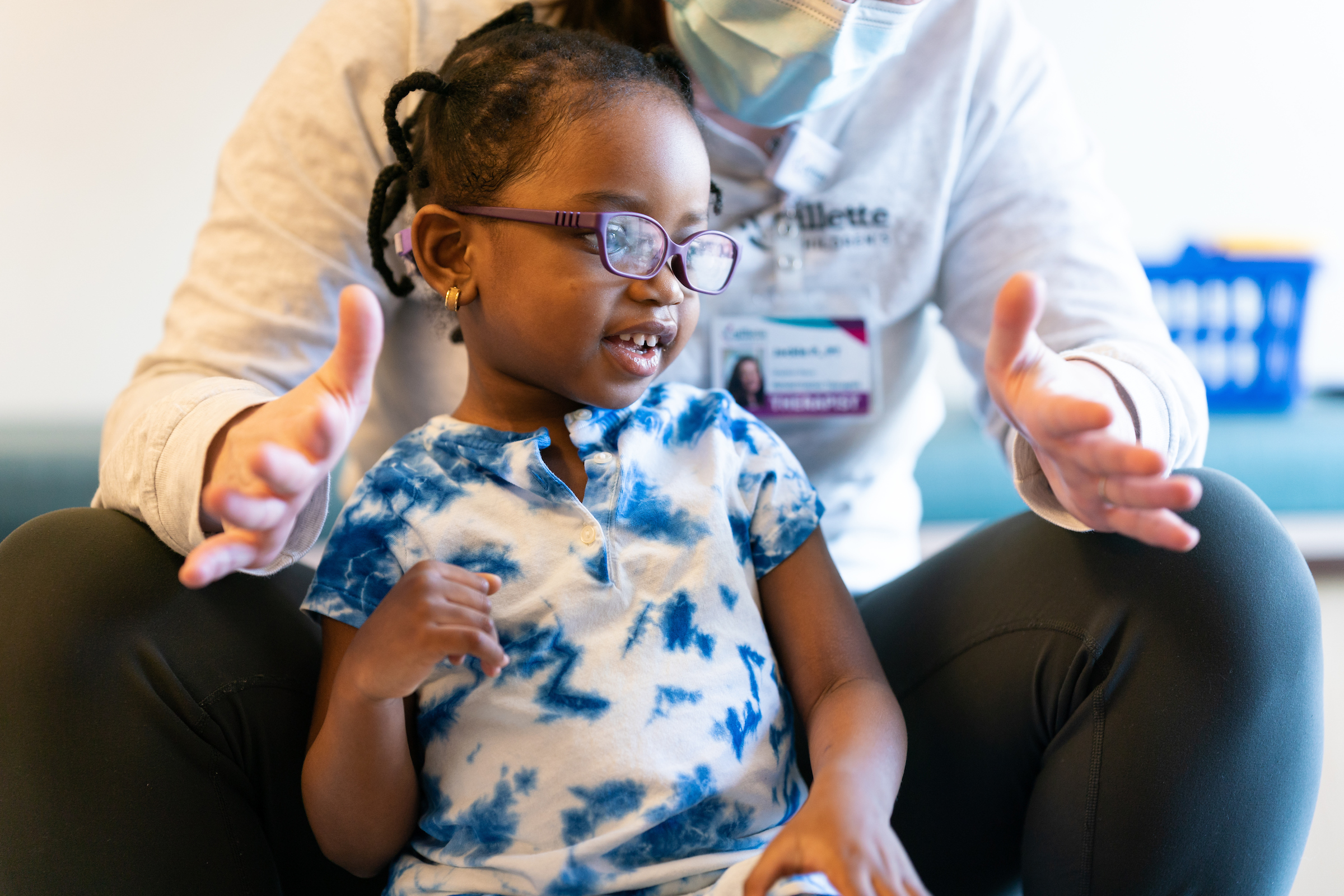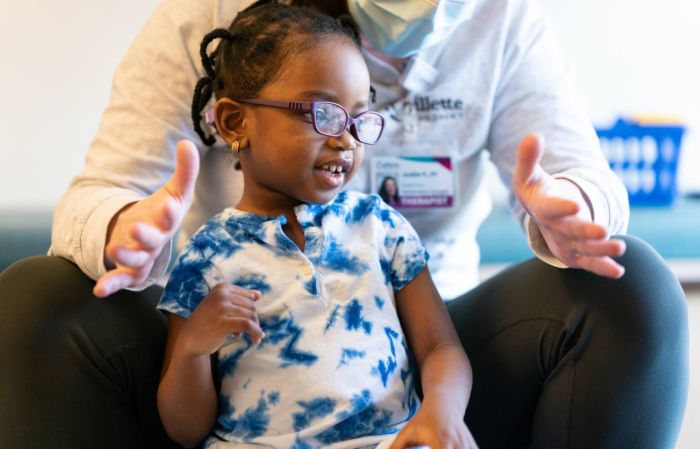
Gillette Children’s Rehabilitation research program, led by Alyssa Spomer, PhD, and Linda Krach, MD, seeks to advance pediatric rehabilitation by evaluating novel rehab technologies and interventions. In a recent pilot program, physical therapists Emma Marino and Molly Peterson and clinical research coordinator Mark Jankowski, MS, investigated the outcomes of intensive physical therapy (PT) for pediatric patients with gross motor delays or impairments.
The American Physical Therapy Association defines intensive therapy by treatment frequency — from three times per week up to 11 times per week. The theory of front-loading PT services is that patients will see a more rapid skill acquisition and carryover into their everyday lives due to the frequency and repetition of PT exercises. There is great evidence to suggest that intensive therapy works for patients who have cerebral palsy or Down syndrome, but the team wanted to expand that population further.
“Because we see kids with all types of different neurodivergence, we opened our pilot to any child between the ages of 2 and 9 years old who had a motor delay or motor impairment to see if we could positively impact their gross motor skills over a short period,” says Peterson.
At the end of the pilot, there was a statistically significant improvement in children ages 2-5 when comparing skills before the intensive to skills immediately post-intensive. While every participant made gross motor gains, 75% of participants made statistically significant gross motor gains.
Finding the Right Families
The intensive outpatient PT that the pilot tested is modeled, in part, after Gillette’s inpatient rehabilitation programming. Patients involved in the pilot were asked to attend PT for two hours a day, five days a week, for three consecutive weeks.
Beyond finding the right patients to enroll in the pilot, the therapists were also looking for the right families. “We’re lucky with our Gillette families because we’re not shy about patients who would like to sign up for this,” Peterson says. “We know more than 15 appointments in three weeks is a big ask, and these dedicated families and our schedulers worked hard to make sure the kids made it to all their appointments.”
The other characteristic that set pilot patients apart was the goal of skill acquisition. Each child enrolled in the pilot had a specific skill in mind to work toward over the three-week period. “We saw three main goals for families in this pilot,”
Marino explains. “First, for our friends that were able to stand for periods of time coming in, walking was their big goal. Second, some patients worked on the transitional movement from sitting on the floor to standing, and, finally, others worked on standing balance and stability.”
Assessing Gross Motor Skill
The team used the gross motor function measure (GMFM) to assess patient progress against their initial evaluation and peers with similar or the same diagnosis. Pilot patients were also evaluated using the six-minute walk test.
“If a patient is ambulating, they’ll walk for six minutes with or without an assistive device like a walker or crutches,” Marino explains. The test assesses endurance and can be used to benchmark a patient against age-based norms for typically and atypically developing children of the same age.
Initial Discoveries, Next Steps
All patients in the pilot made gains toward acquiring their chosen skill as measured by the GMFM and six-minute endurance testing. Seventy-five percent of pilot patients made statistically significant gains.
The study revealed that while the initial hypothesis anticipated ongoing skill acquisition post-pilot, the findings demonstrated a remarkable consistency in skill retention. The stability in skill levels is still significant, even if the results showed no measurable gain in skills three months after the intensive program. Dr. Spomer says, “Although the hypothesis was incorrect, the fact that there was no decrease in function is fairly notable, as most patients tend to lose skill after ending PT sessions.” Overall, the intensive PT pilot results show great promise for patients and families willing to commit the time.
Planning the Next Pilot
The beautiful thing about such promising pilot results is that there is no shortage of ideas pushing this work forward. Marino says, “Ideally, we can do a little digging into the different patient populations and determine age appropriateness, different levels of CP, really kind of teasing it out to make sure that we’re capturing everybody in their most optimal age range and cognitive ability.”
Peterson has a different goal. “Partnering with some of our surgeons would be a huge benefit for families. In this initial pilot, we excluded children who recently had a surgical procedure, but I’d like to see how intensive therapy compares to current rehabilitation programming when it comes to regaining a skill after surgery.”
Dr. Spomer says, “In the larger pediatric physical therapy community, there is a significant need for research centered on the patient populations Gillette serves. Continuing to advocate for and lead research in this area is a responsibility that we have at Gillette and one that we are well suited for, given our staff of dedicated, creative experts and researchers.”
The intensive PT program has limited capacity due to the comprehensive nature of the programming. Learn more about rehabilitation therapies available at Gillette.
Join Our Partners in Care Community!
Subscribe to Partners in Care Journal, a newsletter for medical professionals.
Subscribe Today Home Page
Home Page

